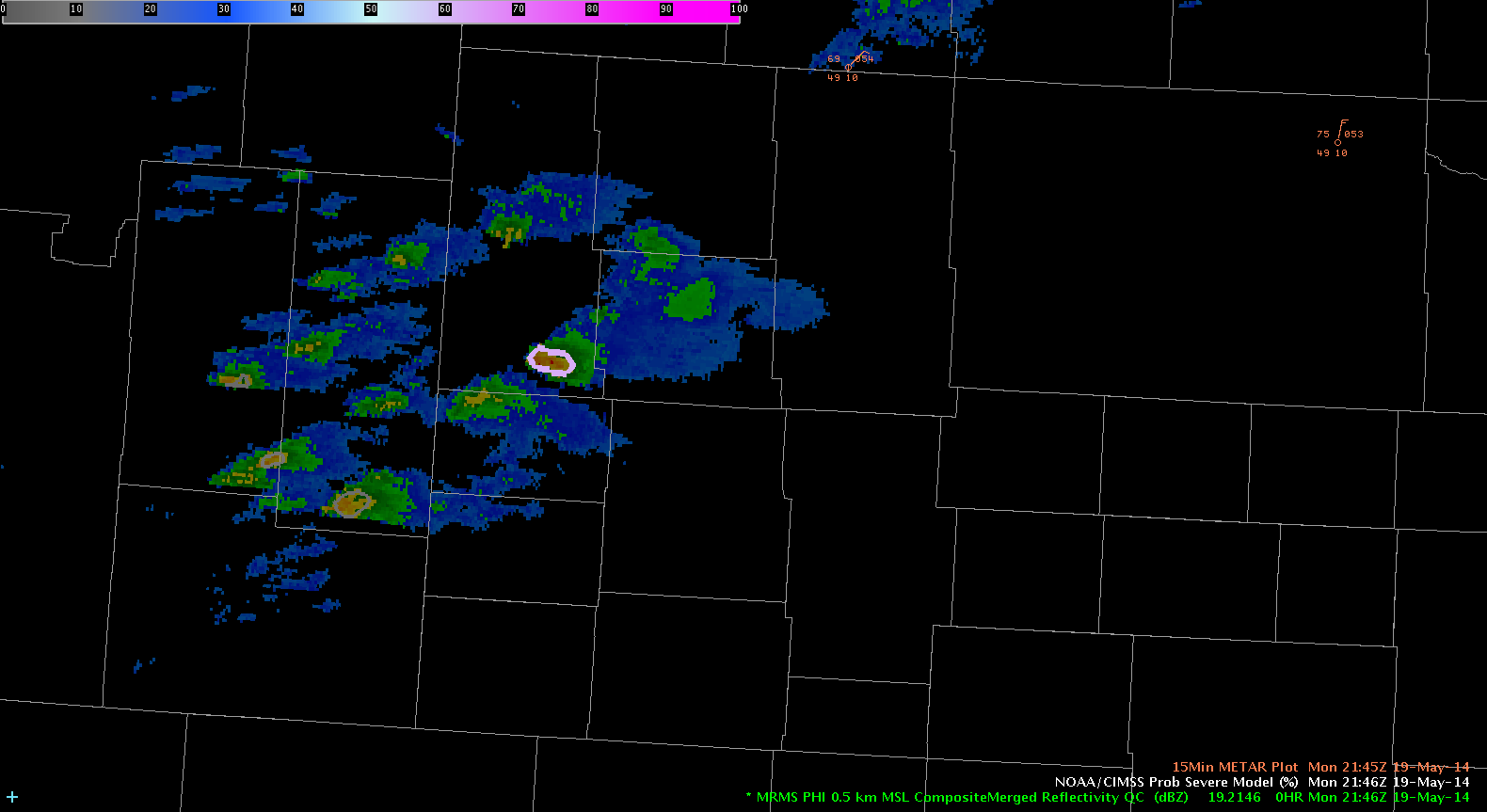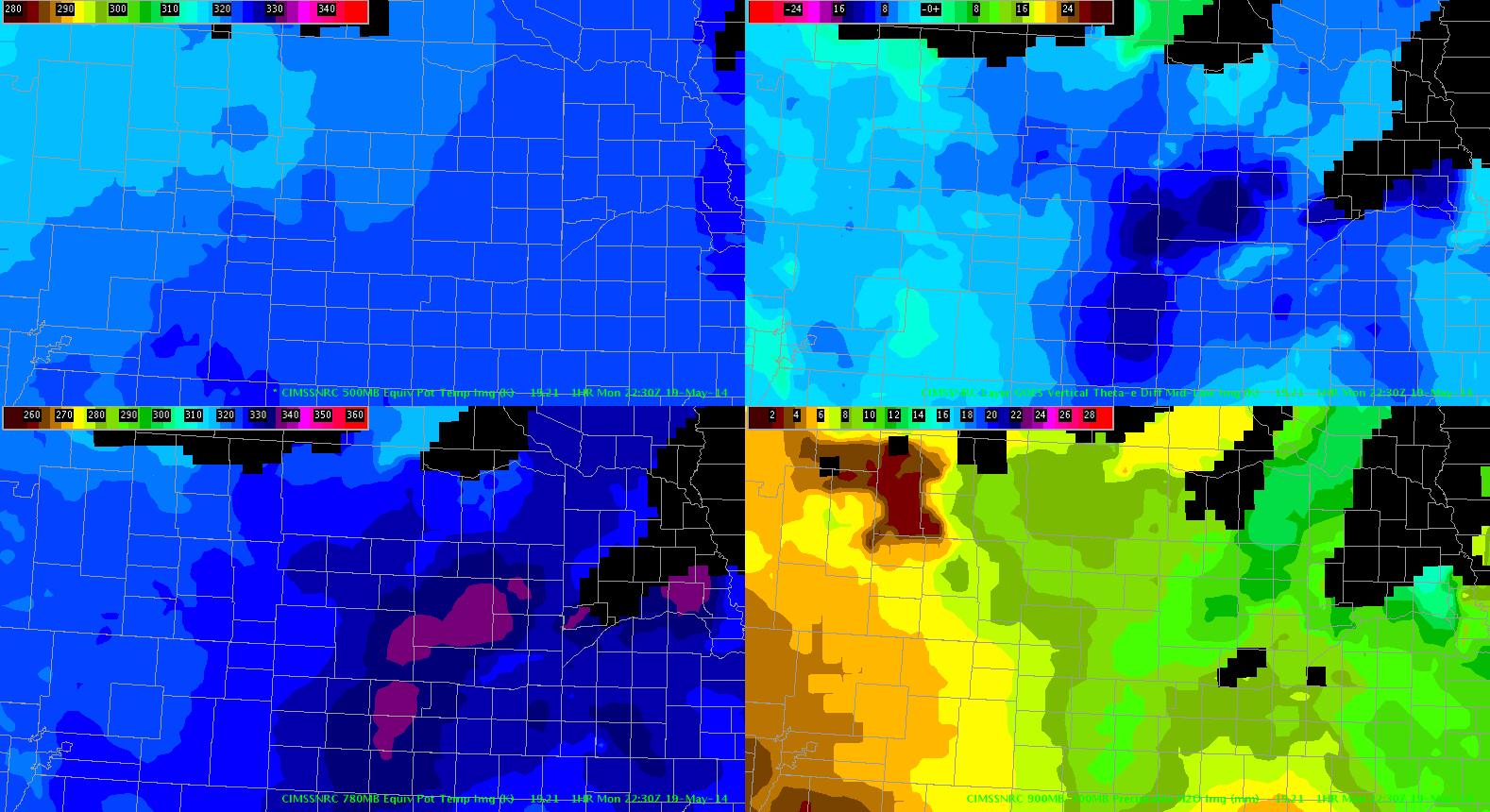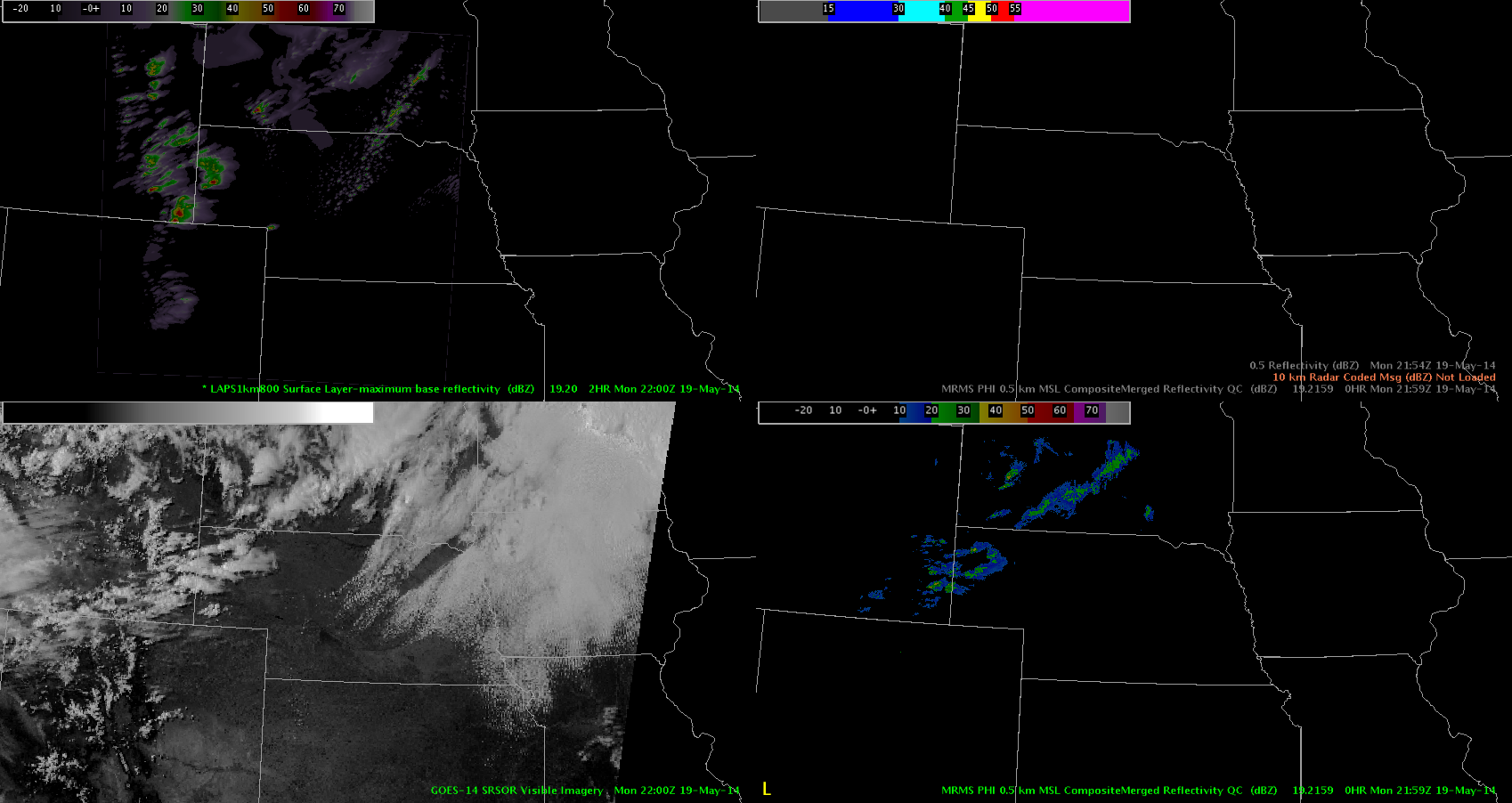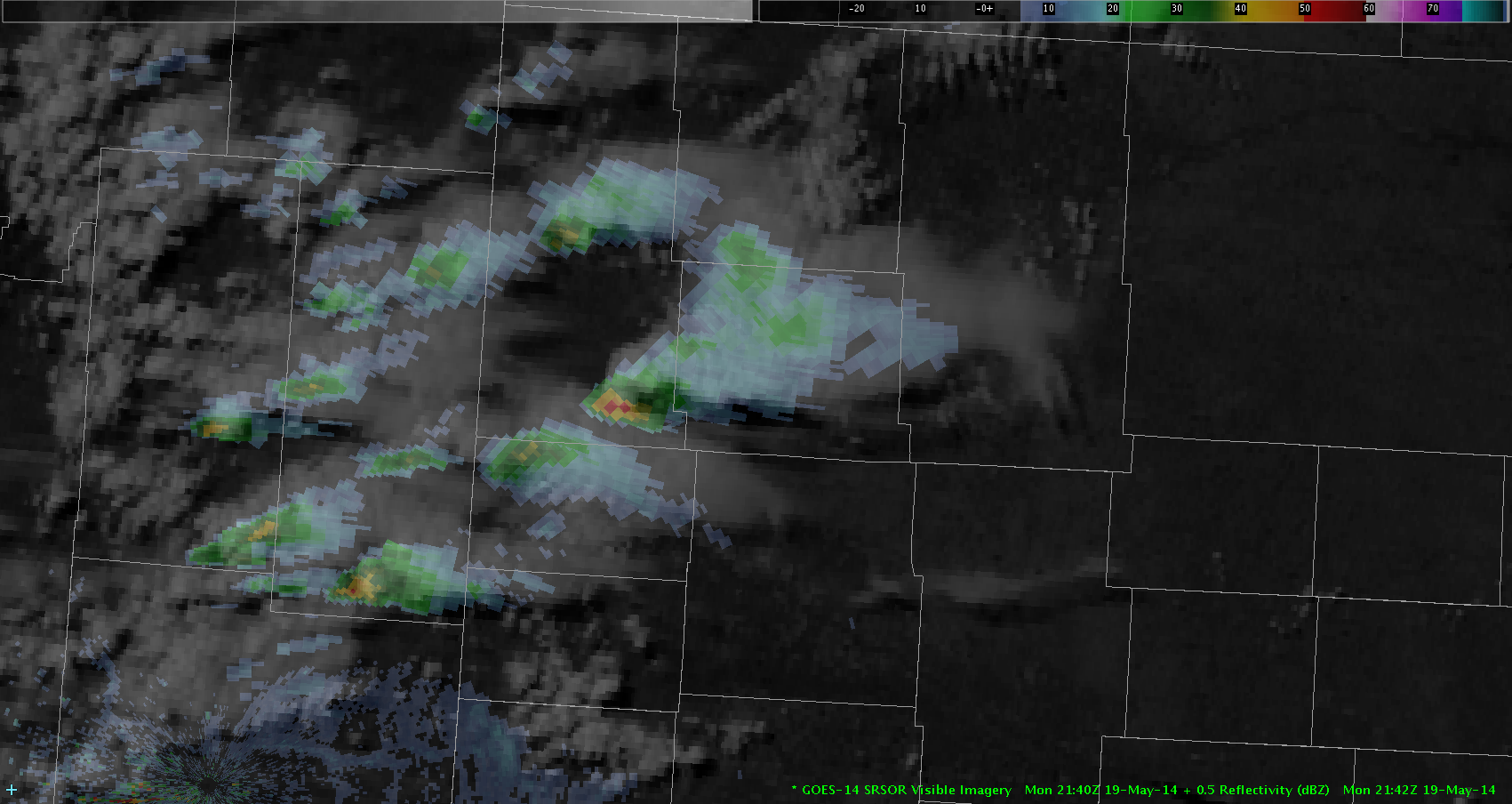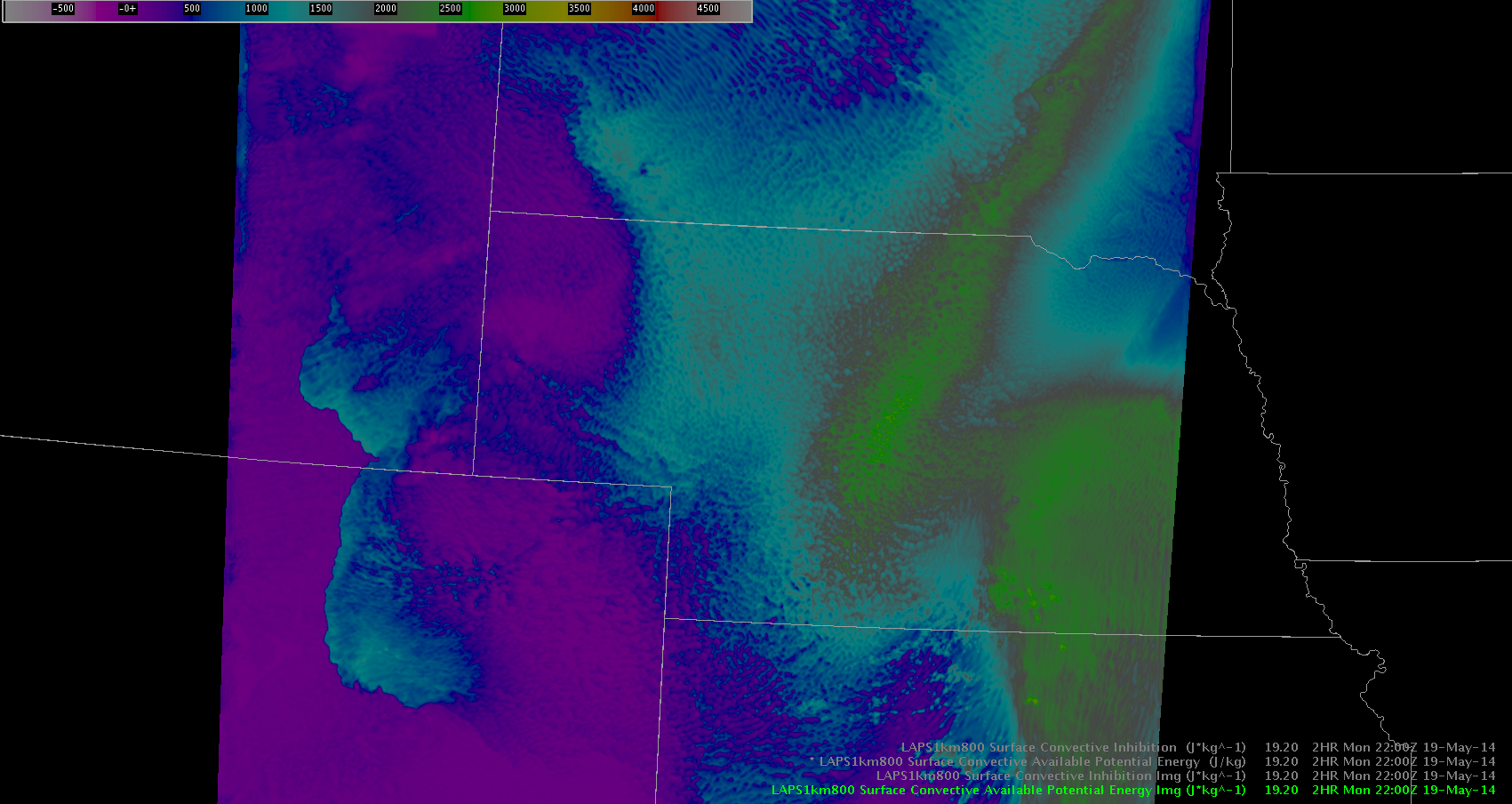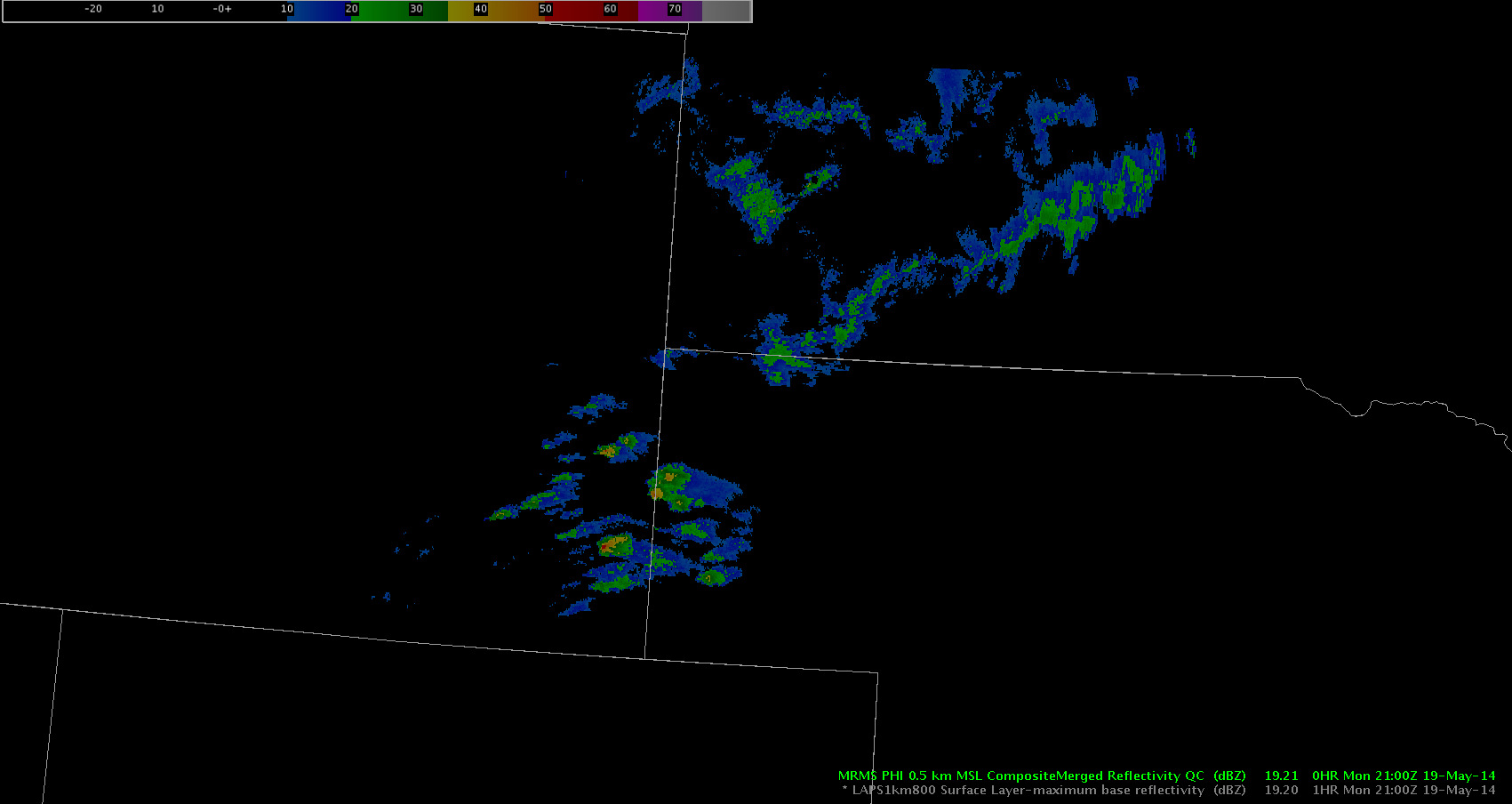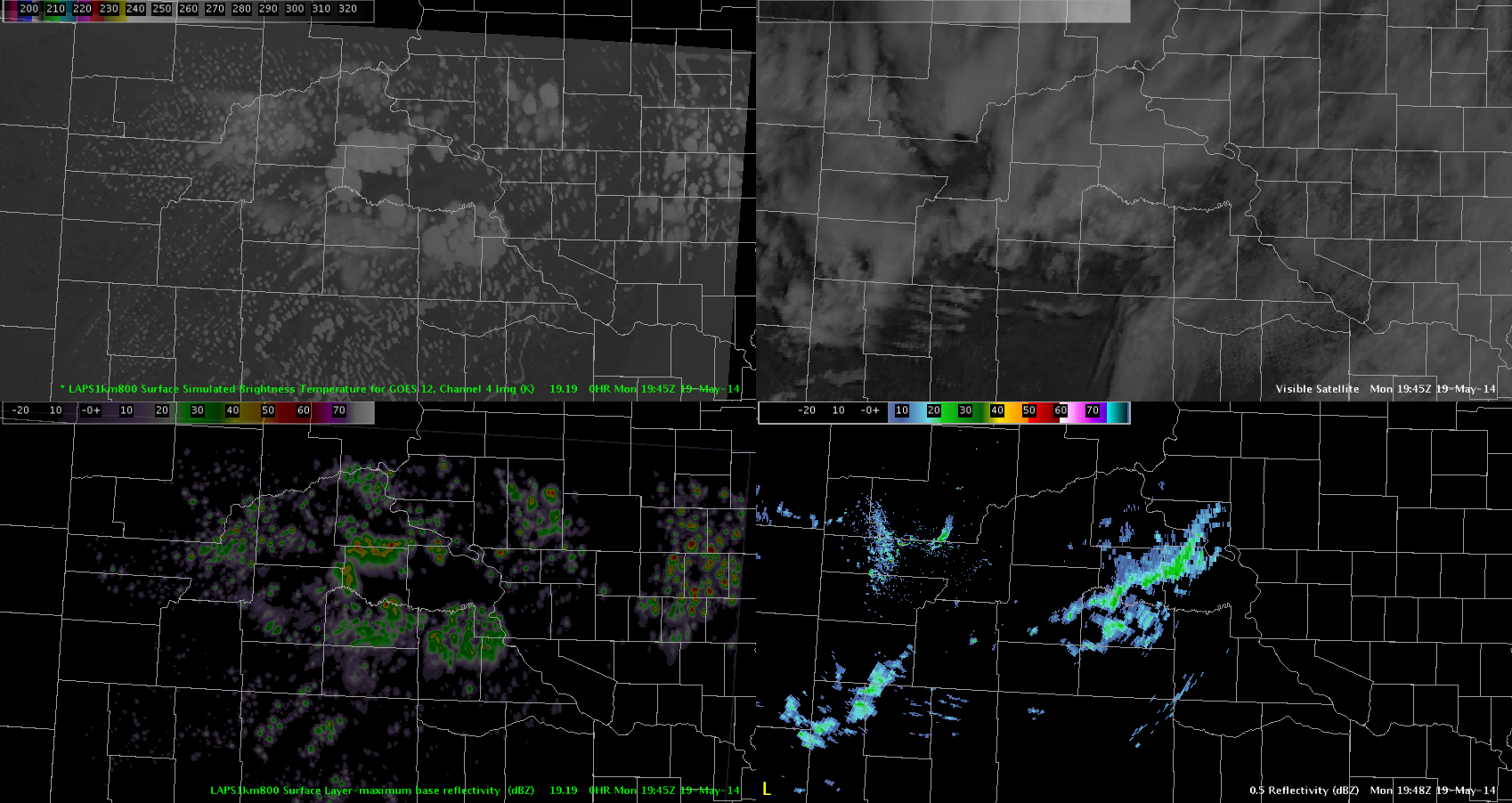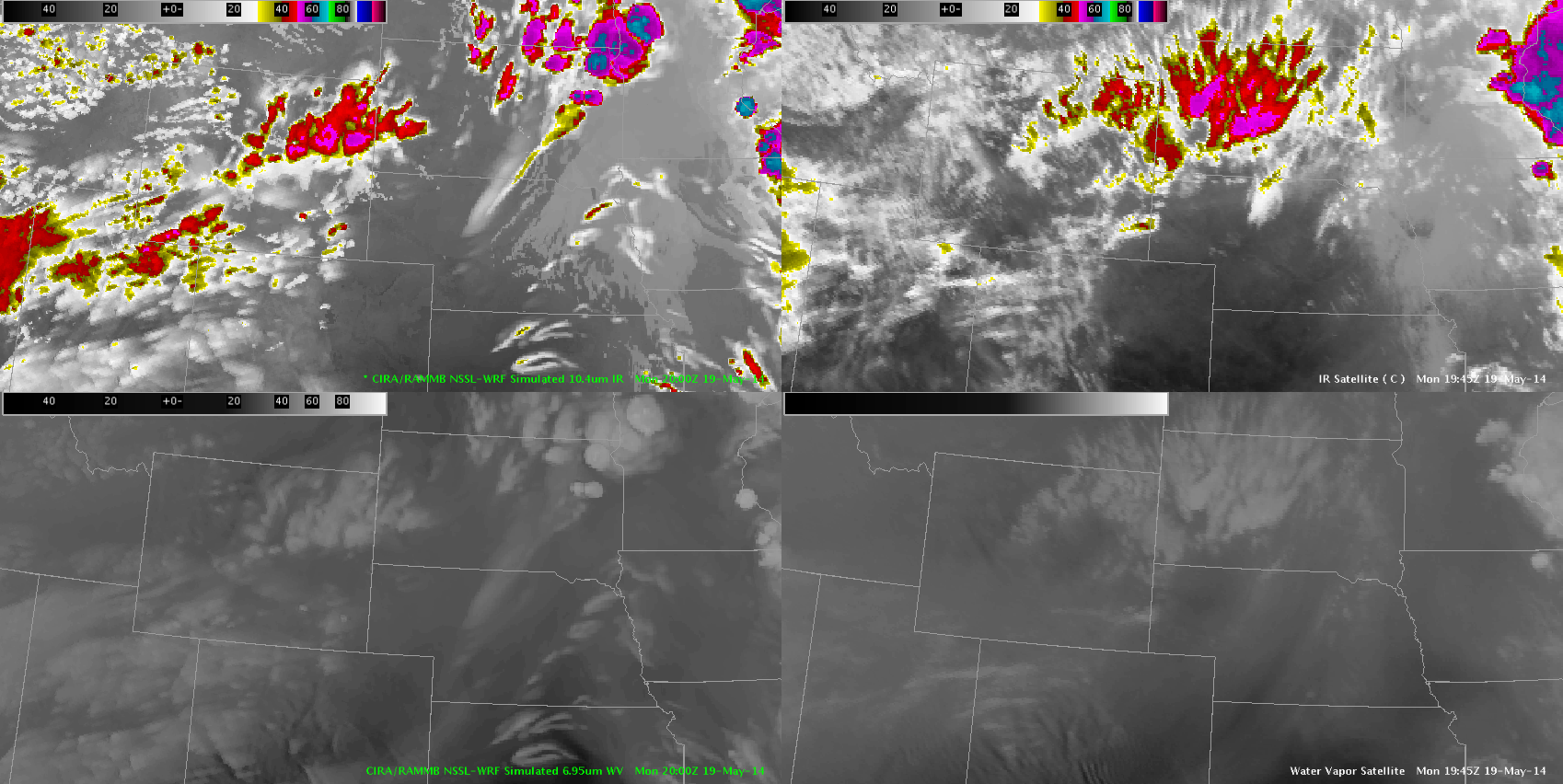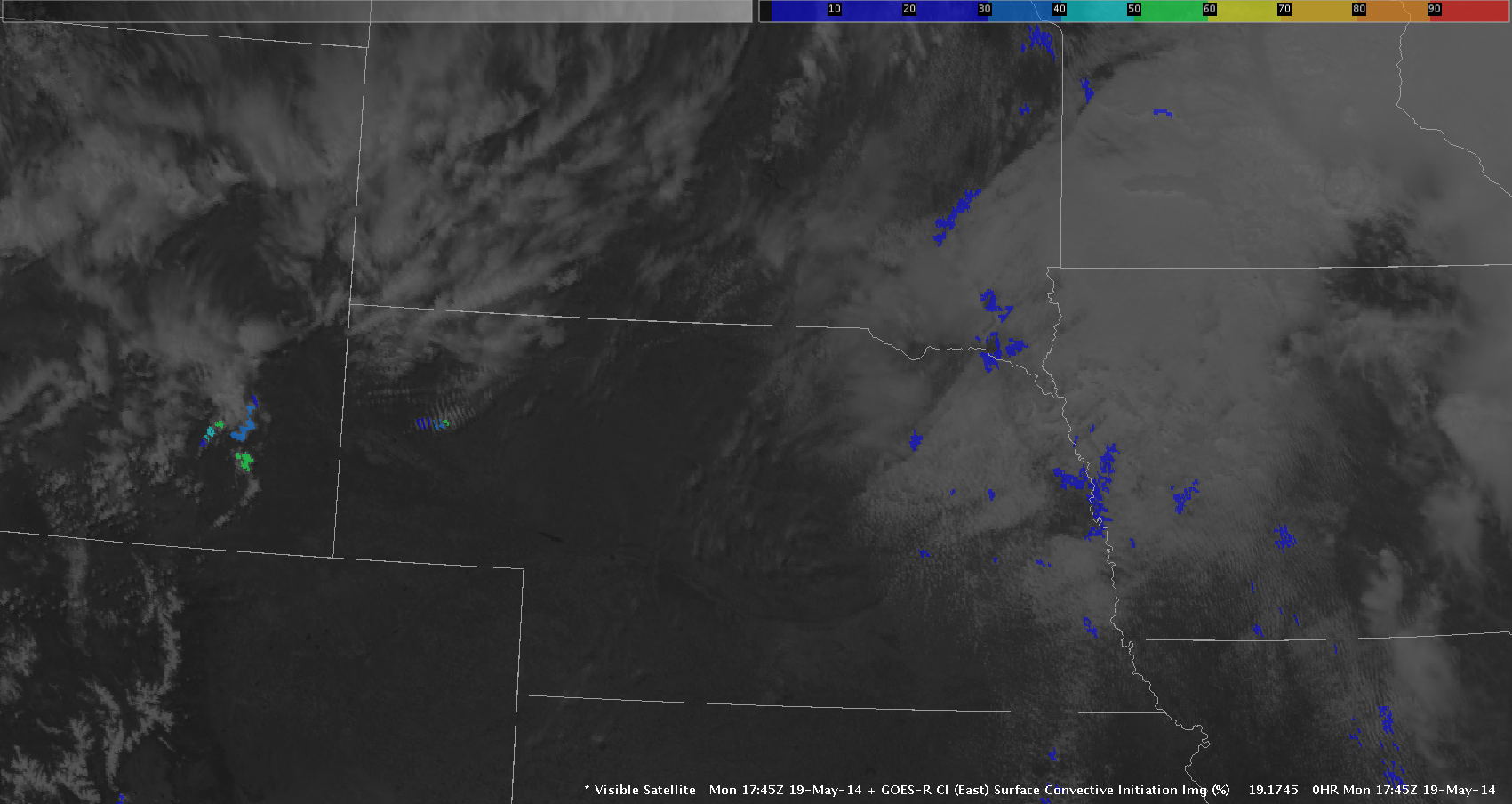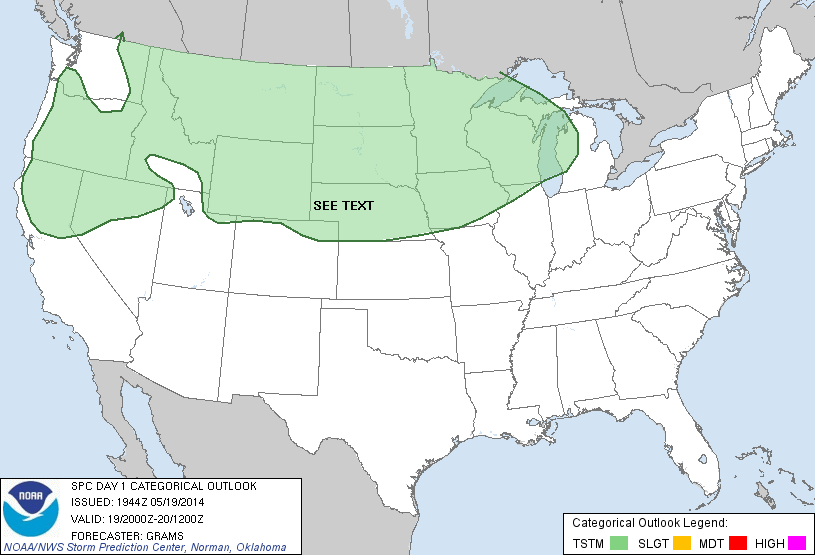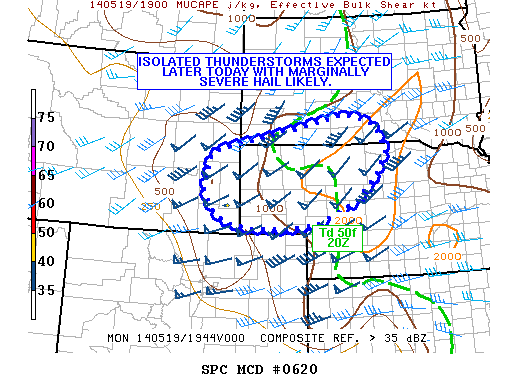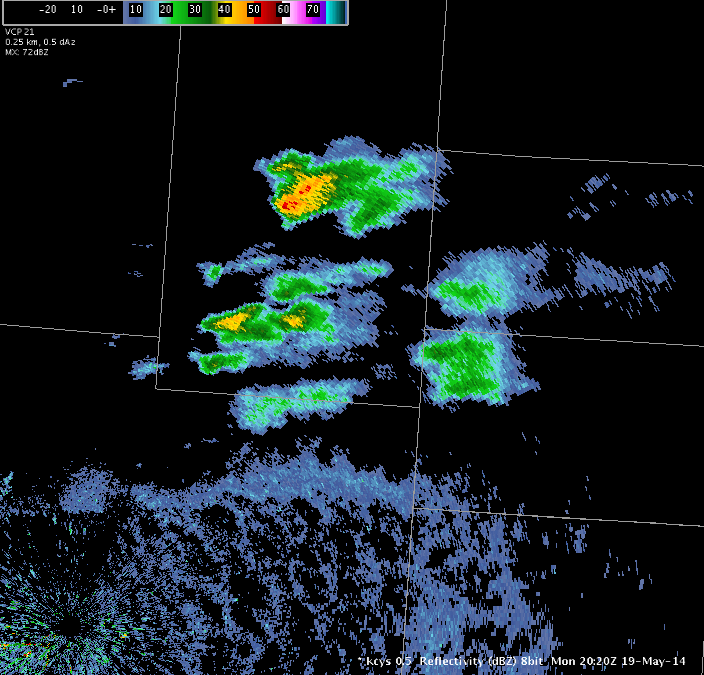A stronger convective cell attempted to develop to the north of Scottsbluff, NE. As the radar indicated higher reflectivity the GOES Porb. Severe Model jumped to 62 percent with strong satellite growth rate. This cell quickly dissipated though and did not produce severe weather. Analysis of the NearCast System indicated that the strongest instability was located farther to the east into western and central Nebraska. While values near the cell indicated marginal instability. Using these two products in tandem may have been helpful. It will be interesting to see if this weak convection moves into the North Platte CWA as it gets into better convective instability.
-JB

